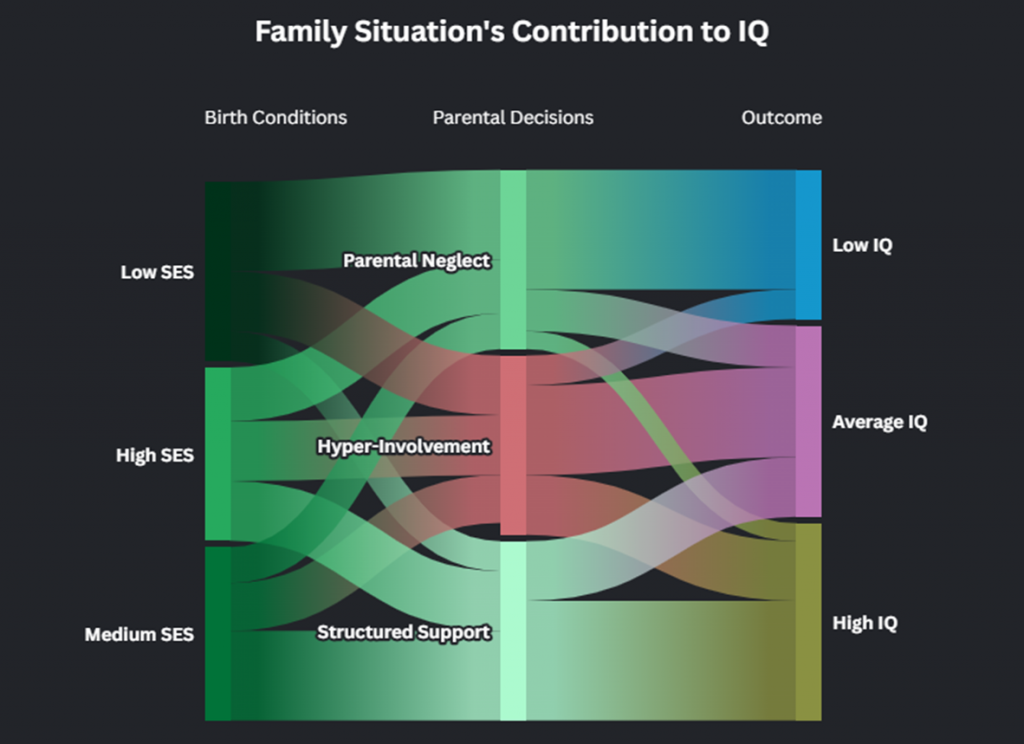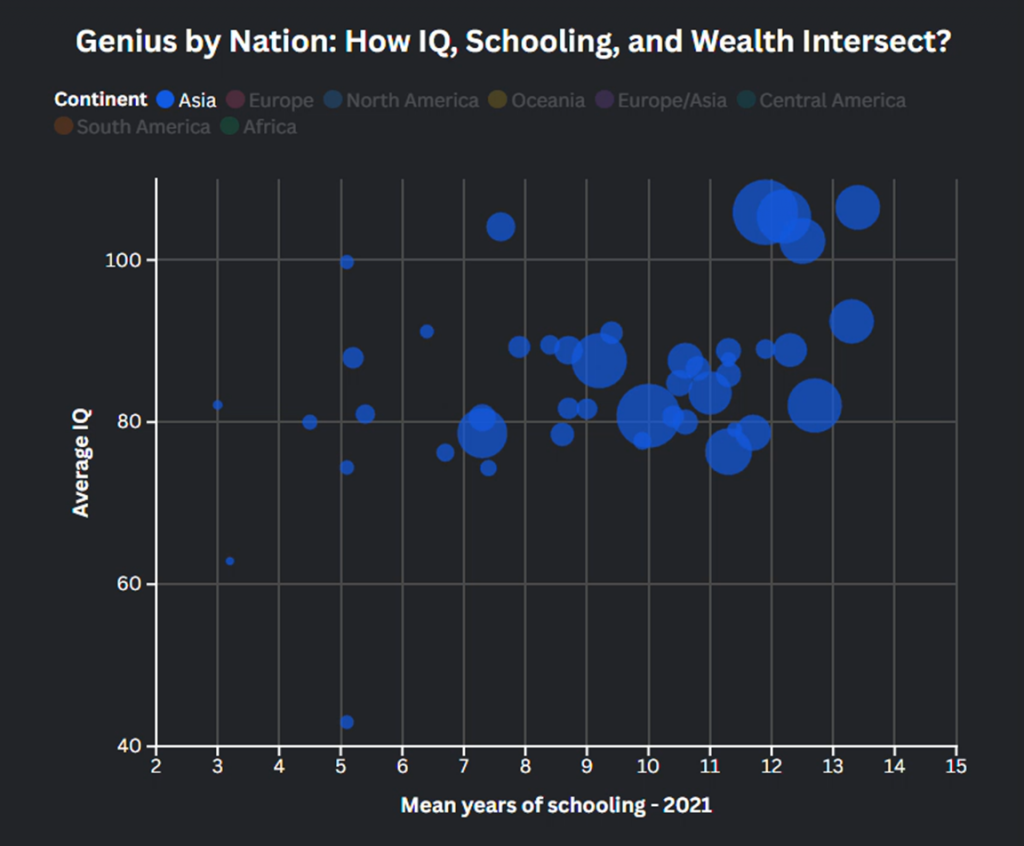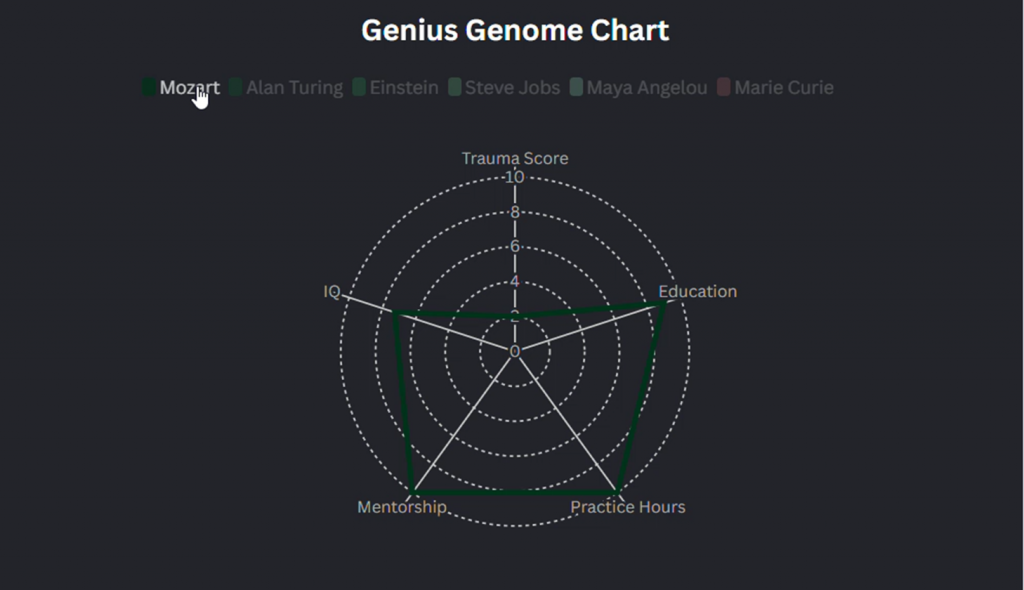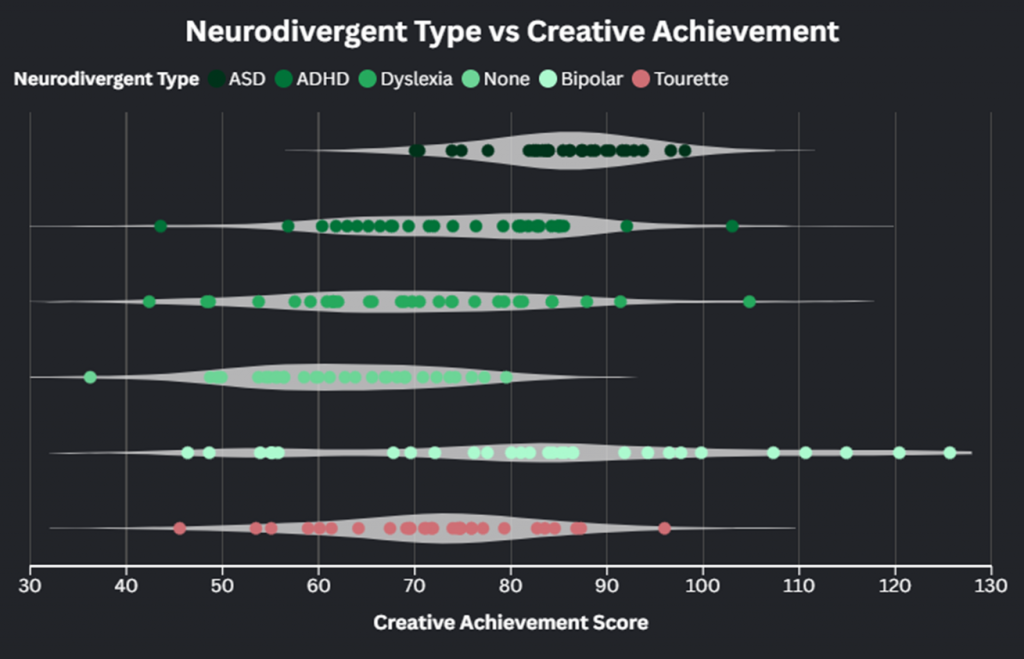
In the dim glow of an imagined laboratory—part Frankenstein’s attic, part Silicon Valley garage—rows of neon-lit vials pulse with strange ingredients: IQ, trauma, mentorship, resilience, obsession. The air hums with electricity and a single question, bold and absurd, hangs in the mist like a provocation:
Can we construct a genius?
Not stumble upon one. Not marvel at their legacy through the rearview mirror of history. But actually build one—intentionally, methodically, even experimentally?
But before we ask how, we must ask what.
What even is a genius?
The word is slippery. Definitions vary depending on who you ask and when you ask them. To some, it’s a matter of IQ—a tidy number above 140. To others, it’s a cultural shift, a moment when someone bends reality into a new shape. But most definitions orbit the same triad: originality, mastery, and impact. Genius is not merely knowing more. It’s seeing differently, daring to act on that vision, and leaving a permanent dent in the world’s narrative.

Think of Albert Einstein, reimagining time not as a ticking clock but a malleable dimension.
Frida Kahlo, turning pain into pigment, autobiography into archetype.
Mozart, composing symphonies before he could spell his full name.
Alan Turing, solving codes with machines the world hadn’t yet imagined.
These are not accidents of nature; they are explosions of possibility—some nurtured, others resisted, but all transformative.
And that’s where the spark of this project began.
Could genius be reverse-engineered?
Could we deconstruct it—not to cheapen its magic, but to understand its machinery? Strip away the myth of effortless brilliance, and look instead at the conditions, the pressures, the patterns beneath?
So I turned to data. Cold, unbiased, unemotional data—the modern oracle. What better way to challenge a romanticized idea than with spreadsheets, charts, and trends?
The Experiment Begins
I began at the beginning: the home.
Using a flow diagram that traced the arc from birth conditions to life outcomes, a fascinating trend emerged. Genius doesn’t thrive in extremes. It doesn’t favor the pampered prodigy or the chaotic survivor. Instead, it often sprouts from a rare and powerful middle ground: structured support.
Not control. Not neglect. Just consistent, calm encouragement.
Children raised with boundaries that fostered exploration—where curiosity wasn’t punished, and failure wasn’t fatal—showed the strongest signs of intellectual resilience. Ironically, both helicopter parenting and laissez-faire detachment underperformed compared to this quiet consistency. It’s not flashy, but it works.

Then came geography—the uneven playing field of nations.
In comparing global data on IQ averages, educational quality, and economic mobility, it became clear: some countries are accidental incubators of brilliance. Others are obstacle courses. Some regions provide access to art, science, mentors, and time to think. Others suppress creativity under the weight of survival.
A genius born in the wrong place may still shine—but often later, harder, and lonelier. Brilliance needs bandwidth, not just metaphorically.

The Relentless Clock
And then, there was time.
Through a waffle chart visualizing the infamous 10,000-hour rule, mastery took on a stark shape: years of laborious, deliberate, mostly unseen effort. It’s not a glamorous process. It’s repetition, revision, sacrifice.
And when charted against age of starting, the message was clear: the earlier, the better.
Mastery isn’t a sprint—it’s a marathon that starts in kindergarten. Finger paints and piano lessons may feel trivial, but they may be laying down the neurological tracks for later greatness. If time is a currency, early childhood is when it’s cheapest to invest.

One bar chart, perhaps the most quietly powerful, showed just this:
The likelihood of achieving exceptional mastery increases exponentially with early practice. Not everyone who starts young becomes a genius—but nearly all those recognized as such began early. It’s a silent race, invisible until the finish line appears.

Blueprint of Brilliance
So what, then, is genius made of?
In my « Genius Genome » radar chart, I distilled recurring traits across history’s most luminous minds.
The profile emerged as a web of intertwined factors:
- Practice
- Mentorship
- Cognitive capacity
- Education
- And frequently, but not universally: trauma
Together, these factors form a pattern—one that echoes across centuries, cultures, and disciplines. It turns out brilliance isn’t just born—it’s brewed. With the right conditions, it simmers and sharpens.


And yet, genius isn’t always recognized.
A timeline in my analysis traced the haunting delay between breakthrough and acknowledgment.
Some waited decades. Others, like Galileo, were persecuted. Many died unknown, their work gathering dust before being resurrected by future minds.
Because genius doesn’t just require brilliance—it requires context.
It needs the right moment, the right audience. The world must be ready to hear what it has to say. And sometimes, it isn’t.
The Price of Vision
Then came the most poignant finding: neurodivergence.
Across creative, scientific, and philosophical geniuses, atypical neurological profiles showed up with surprising frequency.
Autism. ADHD. Bipolar disorder.
These were not deficits—they were differences that, when coupled with the right environment, sparked radical thinking.
But they came with costs: isolation, burnout, breakdown.
Being a genius, it turns out, is hard on the mind. It’s lonely. It’s exhausting. It doesn’t clock out at 5 p.m.
Greatness may dazzle—but it also consumes.

Still, not all genius is born in wartime labs or palace halls.
Some arise in libraries, in garages, on bedroom floors cluttered with notebooks and noise.
The settings differ, but the pattern doesn’t:
- Curiosity
- Constraint
- Conviction
These are the seeds. The difference is whether they are watered—or wither.
And often, genius is only visible in hindsight.
It may not go viral. It may not be understood.
But it lasts. It ripples. It redefines.
So, Can We Build a Genius?
The answer, whispering through the data, is both yes and no.
Yes—we can encourage the conditions. We can plant seeds in better soil, offer better tools, and shield young minds from unnecessary storms.
But no—we cannot guarantee greatness.
Because genius is not a product; it’s a phenomenon. A cocktail of chance and choice, crisis and character.
But the final, urgent question isn’t about individuals.
It’s about systems.
What happens to a society that could build geniuses—but doesn’t?
That starves its schools, ignores its outliers, mocks its eccentrics?
What is lost when potential is misread as misbehavior, when brilliance is buried beneath bureaucracy?
The story of genius is not just a story of people.
It’s a mirror, reflecting what a society chooses to nurture—and what it lets die in silence.
References:
- chatgpt.com
- https://www.google.com/url?sa=i&url=https%3A%2F%2Fwww.pinterest.com%2Fpin%2F613052568004168400%2F&psig=AOvVaw19Helxr-pcc8JbPNe1QVby&ust=1744673073066000&source=images&cd=vfe&opi=89978449&ved=0CBUQjRxqFwoTCMDduuuT1owDFQAAAAAdAAAAABAE
- https://www.google.com/url?sa=i&url=https%3A%2F%2Ffr.wikipedia.org%2Fwiki%2FAlbert_Einstein&psig=AOvVaw1TO8Yx2RxF-GfjWGTy_rsJ&ust=1744670986609000&source=images&cd=vfe&opi=89978449&ved=0CBUQjRxqFwoTCND2nIWM1owDFQAAAAAdAAAAABAf
- flourish.studio
- https://olamidefrancis.medium.com/how-to-make-a-genius-according-to-l%C3%A1szl%C3%B3-polgar-ii-3e4b0efb8c3f
- https://larrygmaguire.com/how-to-create-a-genius/
